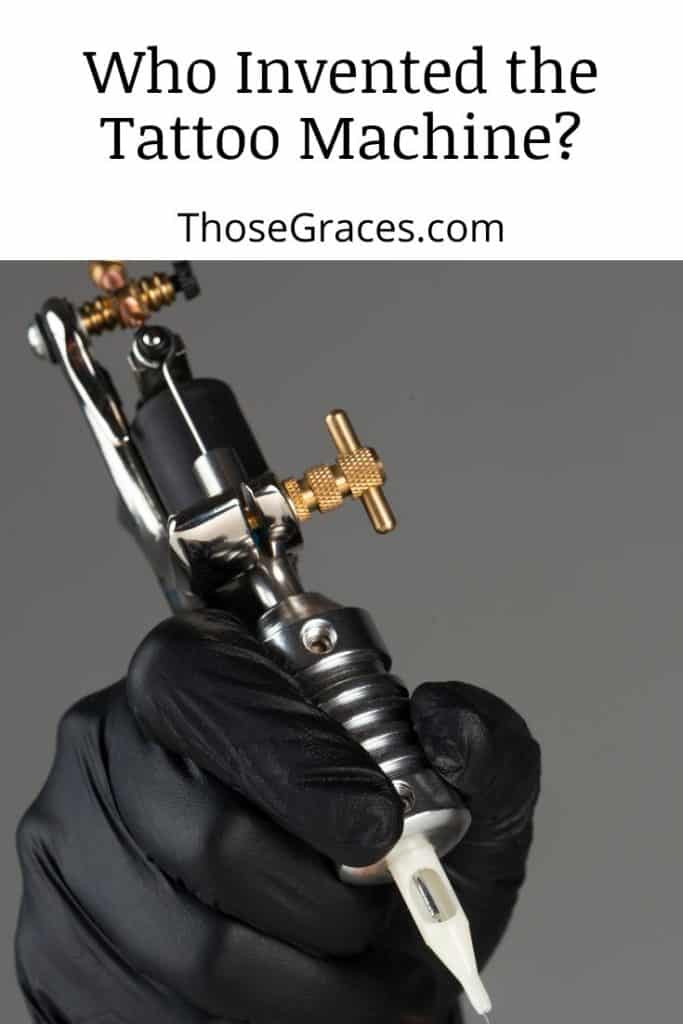Tattoos are a sign of artistic and creative expression, and they have been used for thousands of years for everything from tribal affiliations to symbolism and personal art.
But who invented modern tattoo machines? While the concept is one that began with Thomas Edison, it was Samuel O’Reilly who modified the design to create the modern tattoo machine.
It revolutionized the tattooing industry, paving the way for tattoo artists worldwide to perform their craft that’s more efficiently and precisely.
Table of Contents
Key Takeaways:
- Tattoo artist Samuel O’Reilly invented the tattoo machine in 1891.
- O’Reilly created the tattoo machine based on an invention called the autographic printer, patented in 1876 by Thomas Edison.
- This tool revolutionized the art of body modification and is now found in tattoo parlors worldwide.
- Tattoo machines feature two sets of electromagnetic coils that drive a needle up and down to apply permanent tattoos onto the skin.
Who Was the Inventor of the Tattoo Machine?
Samuel O’Reilly is the inventor credited with creating the tattoo machine.
In 1891, after studying at Edison Electric Company in New York, he MODIFIED a tattooing device that had been initially invented by Thomas Edison and patented it as an electric tattooing machine [1].
O’Reilly had seen tattooists using a handheld device that was PAINFUL and difficult to use. He wanted to create something that would make tattooing easier and less painful.
Therefore, he created a tattoo machine powered by a small electric motor with a needle bar attached to it and an ink reservoir. This allowed tattooists more CONTROL over their artwork as the machine could be adjusted for different line widths and depths.
Pro Tip: The tattoo machine patent was the most critical aspect of the work O’Reilly put into the early tattoo machines. O’Reilly’s machine was primarily based on alterations of an existing gadget.
The first electric tattoo machine CHANGED the tattooing culture worldwide. It made significant steps in tattoo machine history, allowing tattooists to produce works of art that couldn’t have been created before.
READ MORE: Can Tattoo Artists Tattoo Themselves?
Check out this video:
CHECK: How to Make a Homemade Tattoo Gun
How is the Original Tattoo Machine Different from the Modern One?
Since its invention in 1891, tattoo machines have EVOLVED considerably. The original tattoo machine used a foot pedal to power the motor, which is not practical for today’s tattoo artists.
Today’s tattoo machines are made of lightweight metals and are powered by a battery instead of an electric motor. They also feature ADJUSTABLE settings that allow tattoo artists to precisely control the depth and width of their tattoo lines.
The first modern tattoo machine has also come a long way in terms of safety, with modern machines designed to REDUCE the risk of bloodborne diseases.
The electric pen tattoo machine, invented in 1997 by tattoo artist Vince Neil Ashby, is another example of the evolution of tattoo machines.
It allows tattooists to tattoo with a SINGLE needle and is more lightweight than traditional tattoo machines.
CHECK: How to Use a Tattoo Pen
How Were Tattoos Done Before Tattoo Machines?
Tattoos were being applied LONG before tattoo machines. The ancient Egyptians, Greeks, and Romans all used tattooing to mark a person’s identity or rank in society.
However, tattooing was done by hand using VARIOUS tools, such as bamboo needles for tattooing and sharpened pieces of bone for etching the design into the skin.
This process was painful and could be very time-consuming. Tattooing with tattoo machines has made tattooing much more accessible, quicker, and SAFER.
Check out this video about tattoos in the ancient world:
What is the Historical Significance of Tattoos?
Tattoos have been around since ancient times and are used to SYMBOLIZE or commemorate many things.
The HISTORY of the tattoo is extensive and spans thousands of years, cultures, and countries. Tattoo history is fascinating and requires a whole article to itself.
In some cultures, tattooing can be a mark of DEVOTION or loyalty. In others, it is used as body art or an expression of individual identity.
Tattooing is also widely seen as a form of self-expression, allowing people to show their true selves through a CREATIVE art form.
Frequently Asked Questions
When Did the First Color Tattoos Appear?
What is the Oldest Known Tattoo?
Conclusion
The tattoo machine, invented by Samuel O’Reilly in 1891, has REVOLUTIONIZED modern tattooing. It has made tattooing easier and safer while allowing tattoo artists to create beautiful works of art with greater precision.
Tattoos have been used throughout history to express beliefs or mark membership in a group. They have become an IMPORTANT part of many cultures and are widely accepted today.
The tattoo machine has allowed tattooing to evolve and become a more accessible art form, with its potential still LARGELY untapped. It will remain an integral tool in the tattoo world for years to come.

Resources:
- O’Reilly S. BLACK WIDOW TATTOO. BLACK WIDOW TATTOO. Published March 16, 2021. Accessed December 29, 2022. https://www.widowtattoo.com/blog/tattoo-pioneers-samuel-oreilly
- Guinnessworldrecords.com. Published 2022. Accessed December 29, 2022. https://www.guinnessworldrecords.com/world-records/652663-oldest-figurative-tattoos



